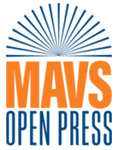Chapitre 2 – Me voici !
Module 4.2 Grammaire: est-ce que, les question-tags
Let’s practice our grammar!
Questions using intonation
One of the easiest ways to ask a question that may be answered by yes/no is to raise the pitch of your voice at the end of a statement. In a declarative statement, the pitch normally falls. Listen to the following dialogue and pay close attention to the intonation.
Tex: Trey, tu aimes la philosophie? (Trey, do you like philosophy?)
Trey: Non. Je n’aime pas la philosophie. (No. I do not like philosophy.)
Tex: Tu connais Sartre? (Do you know Sartre?)
Trey: Non. Qui est-ce? (No. Who is that?)
Tex: Gloups! C’est l’auteur du chef d’oeuvre existentialiste, La Nausée. (Gulp! He’s the author of the existentialist masterpiece, Nausea.)
Question using ‘est-ce que…?’
Another way to ask a yes/no question is to place est-ce que before a statement. Note that que becomes qu’ before a vowel.
Trey: Et toi, Tex, est-ce que tu aimes les films? (And you, Tex, do you like films?)
Tex: Bien sûr, j’adore les films. (Of course, I adore films.)
Trey: Est-ce que tu connais Yoda? (Do you know Yoda?)
Tex: Non. Qui est-ce? (No. Who is that?)
Trey: Duh … (Duh …)
Questions using ‘n’est-ce pas?’
N’est-ce pas? is added to the end of a yes/no question when the speaker expects an affirmative response.
Trey: Tu connais ‘La guerre des étoiles,’ n’est-ce pas? Yoda, c’est le petit sage. (You know ‘Star Wars,’ don’t you? Yoda is the little wise man.)
